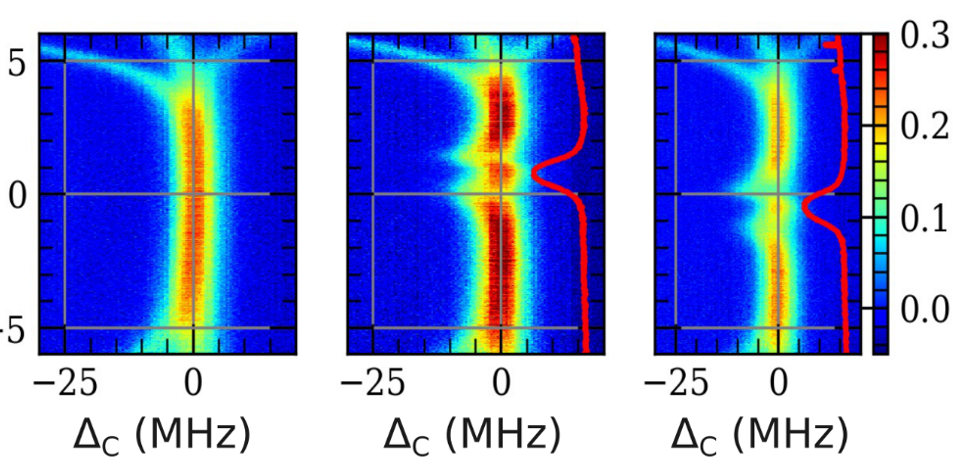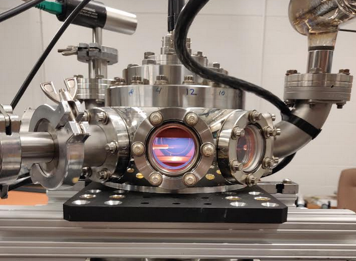
Applications of Rydberg EIT for electric field measurements
Highly-excited (Rydberg) electrons are extremely sensitive to their electric environment. We can measure the associated energy shifts via ladder-type EIT, and apply it for all-optical electric field detection.

Magnetometer-based Quantum-Enhanced particle tracker (m-QET)
Charged particles generate magnetic fields as they travel, and by using atoms as local magnetic field probes, we are able to image the spatial distribution of the electron currents. This project is in collaboration with Thomas Jefferson National Accelerator Facility and MITRE to develop a non-invasive relativistic beam profiler.

Electrometer-based Quantum-Enhanced particle tracker (e-QET)
Highly-excited Rydberg atoms are very sensitive to the electric field, and can be used as a local probe of the electron beam charge distribution by measuring either laser transmission or fluorescence. This project is in collaboration with Thomas Jefferson National Accelerator Facility and MITRE to develop a non-invasive relativistic beam profiler.

Electric field detection in low-density plasmas
Measuring electric fields in low-density plasmas can provide valuable information about its structure and dynamics. We are developing an all-optical electric field diagnostics using Rb atoms, inserted in a low-density Ar plasma, based on coherent two-photon Electromagnetically Induced transparency resonances.

Atomic magnetometry
Narrow two-photon resonances, such as EIT, can be used for designing precise measurement devices, such as atomic clocks, magnetometers, gyroscopes, etc. Currently we are working on developing a VAMPIRE: Vector Atomic Magnetometry via Polarization Interrogation with Rotating EIT.

Squeezed light generation and applications for imaging
Nonlinear interaction with atoms can change light statistics. Under the conditions of polarization self-rotation (PSR), we can generate squeezed vacuum by shining linearly polarized atoms through a Rb vapor cell. We then can use such light to image objects with only a few photons.






